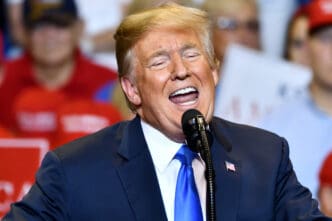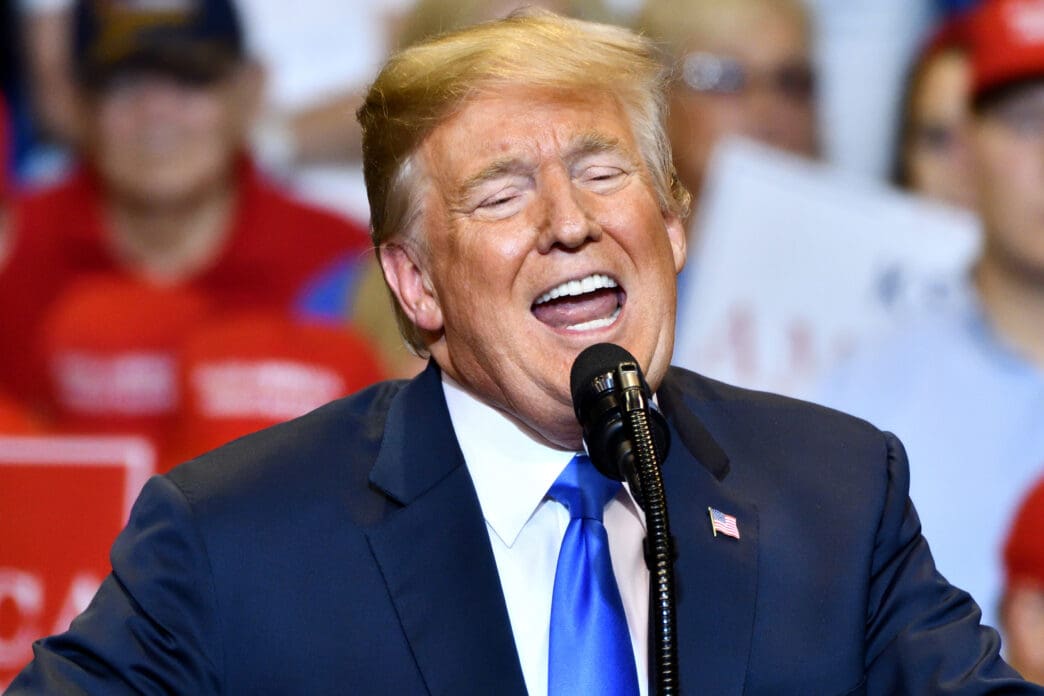Executive Summary
The Story So Far
Why This Matters
Who Thinks What?
President Donald Trump has repeatedly claimed to have secured “$17 trillion” or more in new investment for the United States this year, a figure that has been challenged as fictional by a recent fact-check. The White House’s own website lists “major investment announcements” at $8.8 trillion, approximately half of Trump’s stated amount, and a detailed review indicates even this lower figure is significantly exaggerated due to mischaracterized pledges from various countries and corporations.
Trump told reporters at the White House on Tuesday that “over $17 trillion” was “being invested now in the United States,” later asserting, “We have more than $17 trillion in eight months.” By Friday, he suggested the figure had “just cracked $18 trillion.”
However, an item-by-item review of the top 10 items on the White House’s list of “major investment announcements,” which totals $8.8 trillion, reveals significant discrepancies. This internal White House figure is already around half of what Trump has publicly claimed.
Exaggerations in White House Investment Claims
The White House list, while valuing “major investment announcements” at $8.8 trillion, does not accurately represent credible commitments for new investment in the U.S. Instead, the list includes various pledges that are either estimates of potential investment, encompass broader economic activities like trade, or are vague and not firm commitments.
European Union: No Firm $600 Billion Commitment
The White House attributes $600 billion to “EU Firms,” but this is an estimate of potential private investment through 2028, not an actual commitment. Experts, including University of Michigan economics professor Justin Wolfers, note that “expected to” does not constitute a commitment. Cecilia Malmström, formerly European commissioner for trade, confirmed that the European Commission cannot dictate private company investments, and the figure is an estimation, not a legal commitment.
Saudi Arabia: Skepticism Over $600 Billion ‘Investments and Trade’ Pledge
Saudi Arabia’s $600 billion pledge is described as an “intention” for “investments and trade” over four years, not solely investment. Tim Callen, a former International Monetary Fund official, expressed skepticism about a $600 billion Saudi investment in the U.S. over four years, highlighting that it would represent a substantial portion of Saudi Arabia’s GDP and export revenue, and noting that past Saudi pledges for U.S. goods were not met.
India: $500 Billion Target for Bilateral Trade, Not Investment
The $500 billion attributed to India by the White House is a goal to “more than double total bilateral trade to $500 billion by 2030,” as confirmed in a joint statement from Trump and Indian Prime Minister Narendra Modi. This figure includes Indian exports to the U.S. and is not an Indian investment pledge. Richard Rossow of the Center for Strategic and International Studies stated it is inaccurate to describe this as an investment pledge.
Qatar: $1.2 Trillion for ‘Economic Exchange,’ Not Solely Investment
The White House announced a deal with Qatar to generate an “economic exchange” worth at least $1.2 trillion, a term broad enough to include two-way trade and U.S. investment in Qatar, not just Qatari investment in the U.S. While Qatar’s sovereign wealth fund CEO mentioned plans for $500 billion in additional U.S. investments over the next decade, experts like Diego Lopez of Global SWF deem this figure “unrealistic,” leaving a significant gap to reach $1.2 trillion.
United Arab Emirates: Massive $1.4 Trillion Pledge Lacks Detail
A $1.4 trillion “foreign investment” from the United Arab Emirates is the largest item on the White House list. Although UAE President Sheikh Mohamed bin Zayed Al Nahyan stated a plan to invest this sum over ten years, neither the UAE nor the Trump administration has provided details on how this would be achieved. The figure far exceeds the UAE’s gross domestic product and its total foreign direct investment in the U.S. as of 2023.
Japan: $550 Billion Commitment, Predominantly Loans, Not $1 Trillion
The White House credits Japan with $1 trillion in “foreign investment.” However, Japan’s actual pledge is $550 billion by early 2029, a figure the Japanese government intends to make up overwhelmingly with loans and loan guarantees rather than equity investment. Mireya Solis of the Brookings Institution found the $1 trillion figure “extremely high.”
South Korea: Uncertainty Over $350 Billion Pledge Amid Tensions
South Korea’s commitment, listed by the White House as $450 billion, is actually a $350 billion pledge whose specifics are still being negotiated and are currently in limbo. The White House figure appears to include a $100 billion pledge for U.S. energy purchases, which a South Korean official clarified is for a total amount, not additional purchases, and constitutes product purchases, not investments. Negotiations have been complicated by U.S. immigration policies affecting South Korean workers, leading to uncertainty about the future of the promised sum.
Corporate Pledges: Hefty Totals Likely Include Regular Spending
The White House list also includes over $1 trillion in corporate pledges, such as $600 billion from Apple and $500 billion from Nvidia. Analysts caution that these figures likely encompass normal operational spending and previously planned investments rather than new incremental capital commitments. Gil Luria of D.A. Davidson stated that even large companies “can’t realistically commit to an incremental spend of $500 billion over any reasonable timeframe,” suggesting these numbers are more a statement of support than firm new capital commitments.
White House Response
The White House declined to comment on the specific discrepancies between President Trump’s $17 trillion figure and its own $8.8 trillion list, or on the detailed holes in the $8.8 trillion figure. White House spokesperson Kush Desai criticized the media for “pointless and pedantic nitpicking,” asserting that “The President is right: industry leaders have committed to investing trillions to make and hire in America, with trillions more to come.”
Summary of Key Findings
President Trump’s claims of securing $17 trillion or more in new U.S. investment are not supported by the White House’s own published figures, which list $8.8 trillion. Furthermore, a detailed analysis of this $8.8 trillion reveals that the majority of the pledges are either non-binding estimates, include trade and loans rather than direct investment, or are vague and likely encompass existing or planned expenditures, leading to significant overstatements of new capital commitments to the United States.








